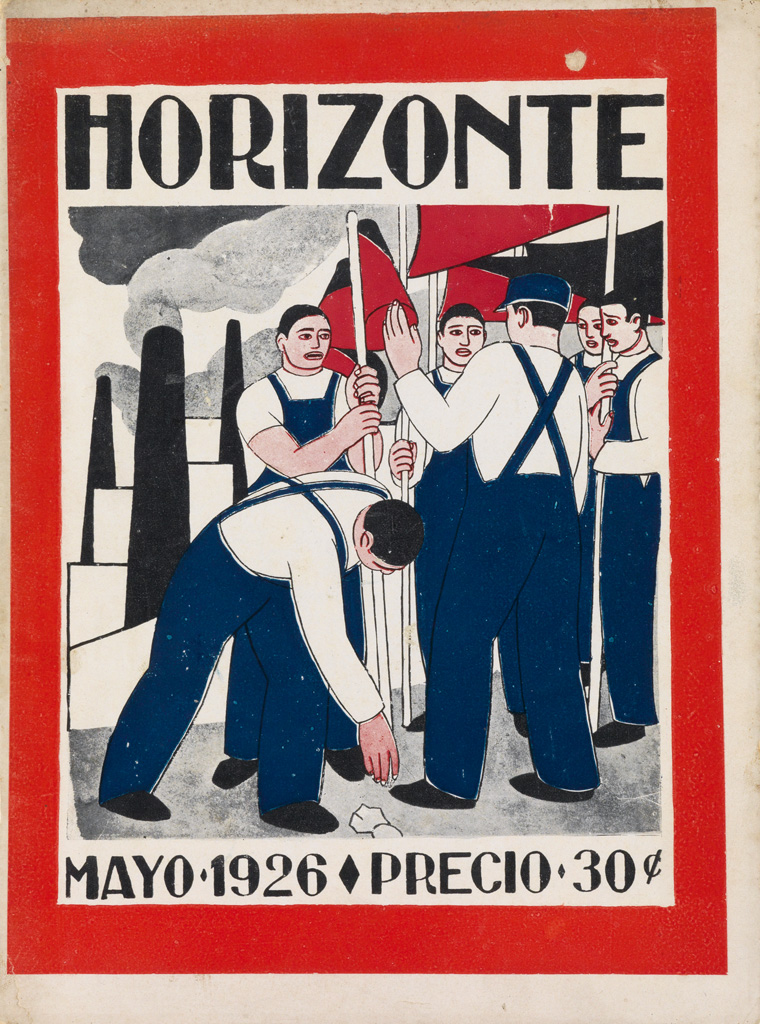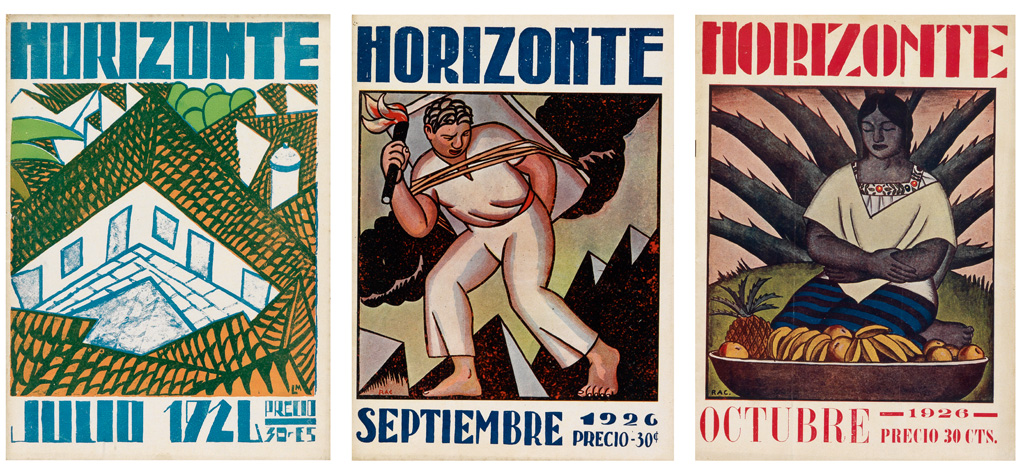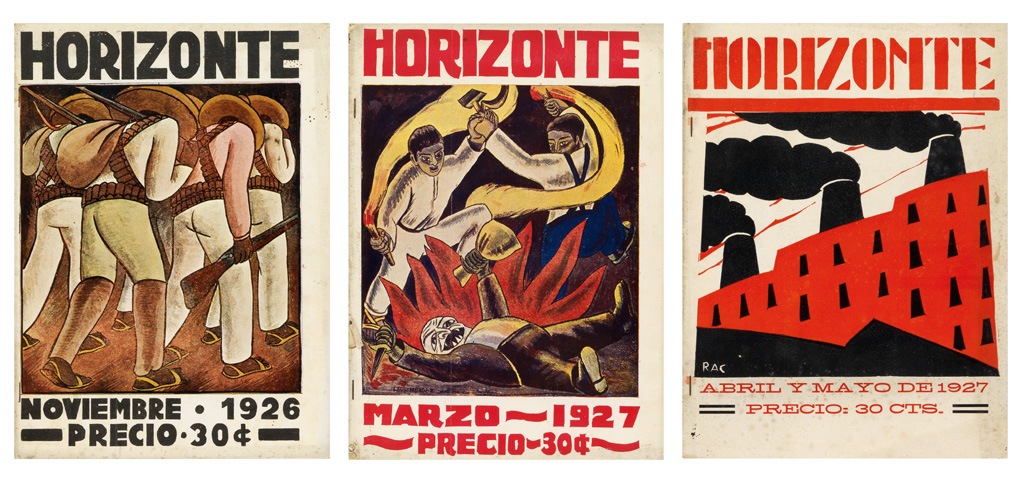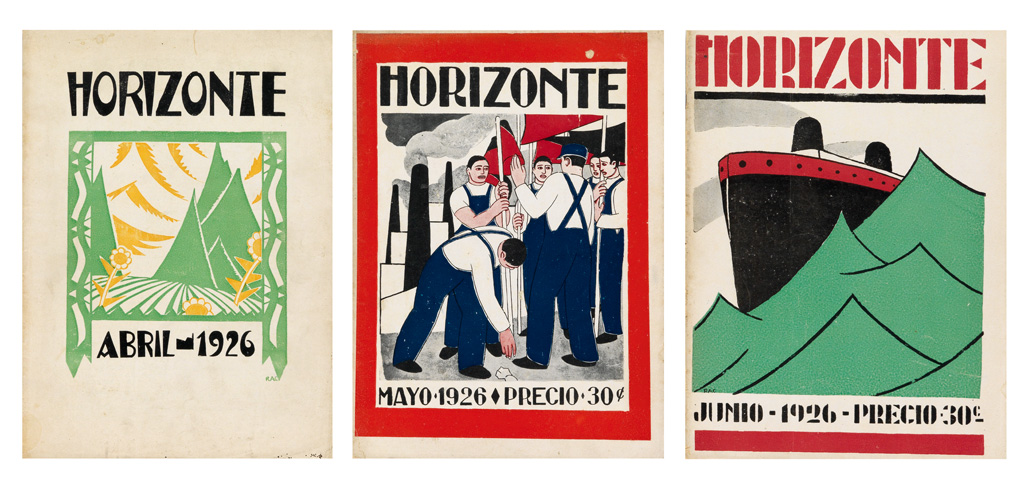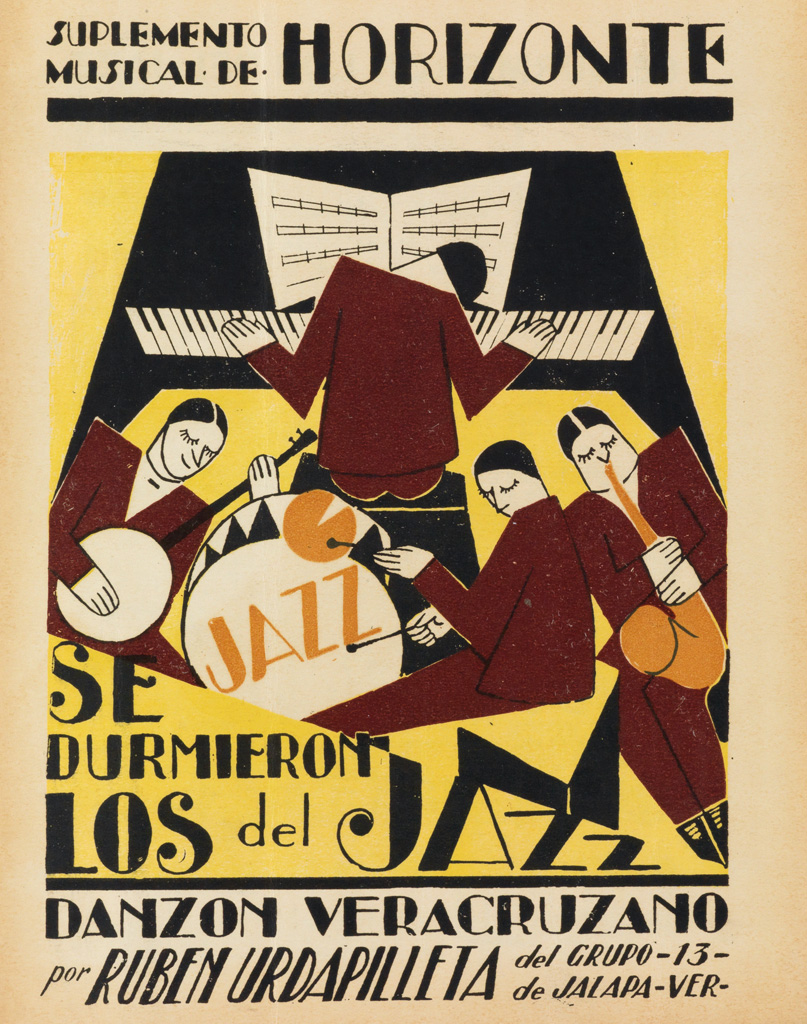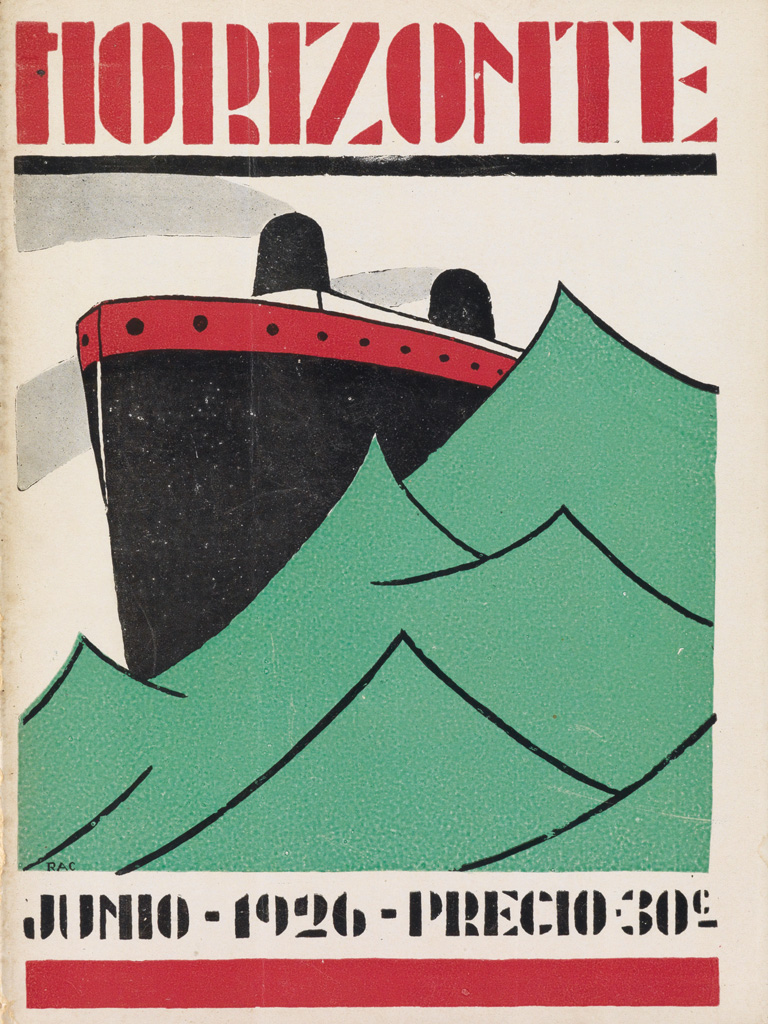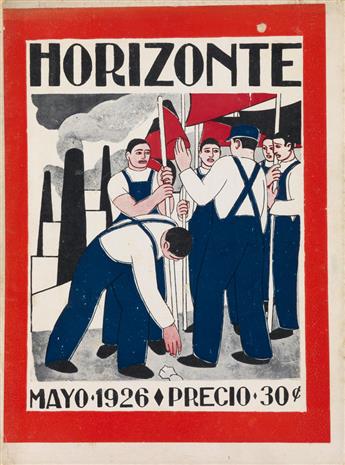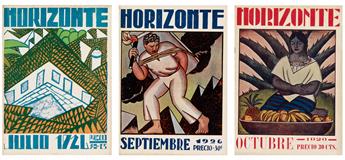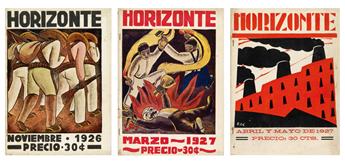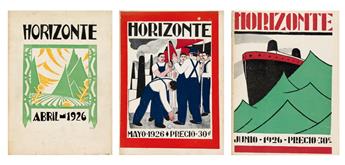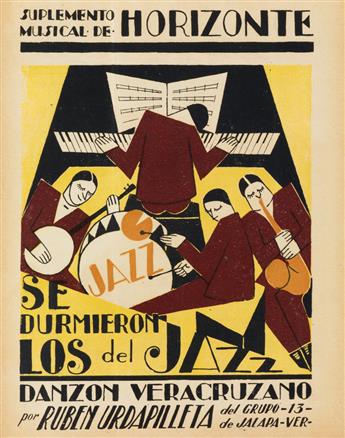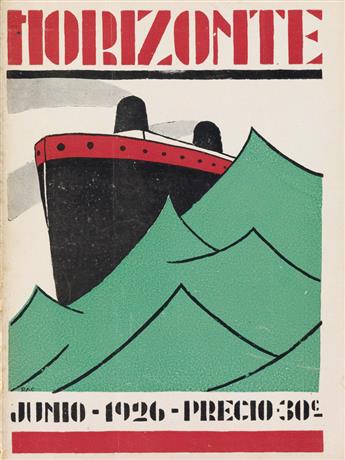Sale 2433 - Lot 128
Price Realized: $ 18,000
Price Realized: $ 22,500
?Final Price Realized includes Buyer’s Premium added to Hammer Price
Estimate: $ 20,000 - $ 30,000
(ARTISTS' MAGAZINES.) Méndez, Leopoldo. Horizonte. Vol 1, Nos 1-4, 6-10. Together, 9 issues (of 10). Edited by Leopoldo Méndez and Ramón Alva de la Canal. With the rare supplements in volumes 2, 4 (containing 2 supplements), 6 and 8. Literary and artistic contributions including reproductions of woodcuts, paintings, and photographs by the editors as well as Rufino Tamayo, Pérez y Soto, Manuel Maples Arce, Fernández Ledesma, Edward Weston, Tina Modotti among many others. 4to, original thin staple-bound wrappers illustrated by Méndez, de la Canal and Diego Rivera, only very minor wear, mostly to spines, occasional light spotting, but otherwise bright and sound. Jalapa [Xalapa], April 1926-May, 1927
Additional Details
the incredibly rare journal of the vanguard stridentist art movement in mexico. The Stridentist movement (El Estridentismo) was formed as a cultural response to political and intellectual complacency in the immediate aftermath of the Mexican Revolution. Formed in Mexico City and Puebla by Manuel Maples Arce at the end of 1921, the group reached its zenith in Xalapa in 1925. While the members issued manifestos, distributed books, and organized performances, Horizonte was their most important mouthpiece. Under the directorship of Germán List Arzubide, the first issue premiered in April 1926 and followed the lead of other avant-garde movements that used the graphic magazine format to disseminate their agenda through social, political, and artistic content. It was distributed widely to government officials, workers, students, teachers, and campesinos (the peasant farmers) and thus served as the largest government-sponsored publication of the State of Veracruz.
Like other contemporary artists' magazines, it reflected a fascination with new and creative technology and the struggles of life in increasingly fast-paced cities. Méndez explored printmaking for the journal with a newfound intensity and originality, driven by the idea that its art should be an immediate response to both Mexico's cultural roots and its current events. The July 1926 cover, for example, shows a Cubist-style portrayal of Jalapa's tile roofs and garden patios reflecting village provincialism, while the worker and campesino wielding a hammer and sickle against the capitalist gargoyle at their feet on the May 1927 issue put class struggle and resistance at the visual forefront. Of note, the editors used scraps of linoleum from the remodeling of the government palace as an inexpensive surface for engraving in order to create many of the illustrations. Méndez also wrote an article in the November 1926 issue about the importance of muralists supporting national identity in postrevolutionary Mexico, thus slamming down the bourgeoisie. That same issue features a photograph by Tina Modotti, "Workers Parade," which reinforced their revolutionary message. By 1928 the Stridentists had largely dispersed, but their influence left an indelible mark on avant garde movements of the 1930s in Latin America and beyond.
We know of no other set to have appeared at auction and the facsimile edition by Notimex, in collaboration with the Fondo de Cultura Económica Universidad Veracruzana, the National Council for Culture and Arts, and the National Institute of Fine Arts contained only 3 of the 5 supplements in this lot. Caplow, Leopoldo Méndez: Revolutionary Art and the Mexican Print; Rashkin, Elissa, The Stridentist Movement in Mexico: The Avant-garde and Cultural Change in the 1920s, Lanham, MD, 2011.
Like other contemporary artists' magazines, it reflected a fascination with new and creative technology and the struggles of life in increasingly fast-paced cities. Méndez explored printmaking for the journal with a newfound intensity and originality, driven by the idea that its art should be an immediate response to both Mexico's cultural roots and its current events. The July 1926 cover, for example, shows a Cubist-style portrayal of Jalapa's tile roofs and garden patios reflecting village provincialism, while the worker and campesino wielding a hammer and sickle against the capitalist gargoyle at their feet on the May 1927 issue put class struggle and resistance at the visual forefront. Of note, the editors used scraps of linoleum from the remodeling of the government palace as an inexpensive surface for engraving in order to create many of the illustrations. Méndez also wrote an article in the November 1926 issue about the importance of muralists supporting national identity in postrevolutionary Mexico, thus slamming down the bourgeoisie. That same issue features a photograph by Tina Modotti, "Workers Parade," which reinforced their revolutionary message. By 1928 the Stridentists had largely dispersed, but their influence left an indelible mark on avant garde movements of the 1930s in Latin America and beyond.
We know of no other set to have appeared at auction and the facsimile edition by Notimex, in collaboration with the Fondo de Cultura Económica Universidad Veracruzana, the National Council for Culture and Arts, and the National Institute of Fine Arts contained only 3 of the 5 supplements in this lot. Caplow, Leopoldo Méndez: Revolutionary Art and the Mexican Print; Rashkin, Elissa, The Stridentist Movement in Mexico: The Avant-garde and Cultural Change in the 1920s, Lanham, MD, 2011.
Exhibition Hours
Exhibition Hours
Aliquam vulputate ornare congue. Vestibulum maximus, libero in placerat faucibus, risus nisl molestie massa, ut maximus metus lectus vel lorem.



